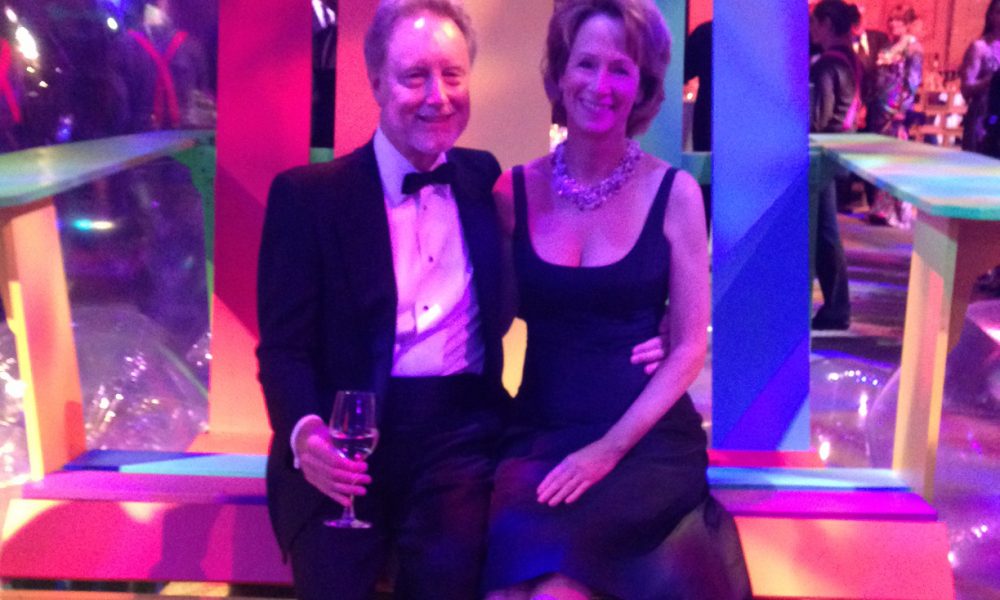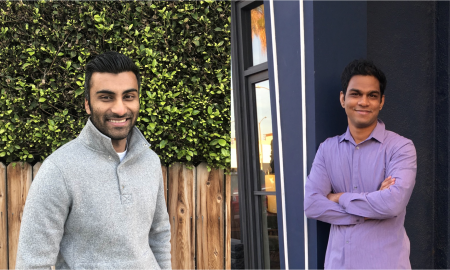

Today we’d like to introduce you to Ken Hurd.
So, before we jump into specific questions about the business, why don’t you give us some details about you and your story.
Like many success stories, there is an element of luck combined with seizing an opportunity when it presents itself. In my case, it was a lunch with a key person in the original Waldorf=Astoria in New York. When I shared that I was planning to launch my own firm, he asked if I wouldn’t mind waiting while he fetched someone I should meet, and this brief encounter in August of 1981 led to my first commission to redesign the Park Avenue Entrance Lobby of this famed hotel. The stunning results of this small restoration project captured the attention of management, and the following year we were invited to compete for the refurbishment of the three-tiered Grand Ballroom. We prevailed by proposing to restore its Art Deco magnificence, and its success ultimately led to our 36-year run in providing design services to renovate and restore nearly every public area including the Main Lobby and the storied Starlight Roof as well as many of the grandest suites in the Waldorf Towers, including the Presidential and Royal Suites.
The Waldorf=Astoria was coined by Conrad Hilton as “the Greatest of Them All”, and the lessons learned from working there led to my becoming known as a leader in the hospitality design industry as early as 1991 when I was honored with the industry’s Platinum Award for Lifetime Achievement. With commissions that ranged from creating the first double Five-Diamond hotel in the New York area to designing extravagant High-Roller Suites in Las Vegas, the journey has been an exciting one of working with very interesting people from every region in the country.
Has it been a smooth road?
Running a small business for any duration is rarely smooth sailing, and my experience is no exception. First of all, the design professions all serve at the pleasure of the real estate market which invariably has its boom and bust cycles, all of which are beyond one’s control. When the downturn is severe, as it was in 1992, I had to face a business owner’s worst nightmare, which was to lay off nearly half my staff at the time. Because design is an intense profession, a small office often becomes like a family – not only do we work side by side, but we also eat, travel and lose sleep over deadlines together. Parting with someone for poor performance or bad attitude is easy compared to having to lay off staff for financial reasons.
As the industry reset itself following the ‘92 recession, the next challenge became how to do more with less. Competing with global firms, I was an early adopter of technology to streamline our documentation of drawings, specifications and purchase orders, allowing more time to be devoted to design rather than paperwork. As a bi-product, our drawings and specifications became some of the most thorough and respected in the industry.
The third challenge in running a small firm remains a challenge today; namely, finding the right balance in how much time to devote to marketing, designing and managing staff. Because the best marketing is by word-of-mouth, maintaining good relationships and trust with past and repeat clients is key. With respect to management, my advice is to hire attitude, talent, and people who know how to work collaboratively. If successful on these accounts, there will be ample time to devote to the joy of designing, which of course, is why we were drawn to this profession in the first place.
We’d love to hear more about your business.
Our primary specialty has been hospitality design, and among other things, we are known for our work on behalf of landmark and historic hotels such as the Waldorf=Astoria, the Barclay Inter*Continental, The Plaza and the Essex House in New York. Further afield, we count The Greenbrier, the Fontainebleau, Caesars Palace and Exclusive Resorts among our past clients.
Along the way, we produced the interior designs for the Garlands of Barrington, a continued care retirement facility in Illinois, an upscale clubhouse based on a Newport mansion for a gated community in Beijing, China, and here in Boston, the contemporary common areas of the West End Residences adjacent to Mass General Hospital. We have designed homes in the Metro-West area of Boston, and recently, we created a new model in small retail shop design with the award-winning Cheese Shop of Salem on the North Shore of Boston.
There is no question that I am most proud of providing 36 years of design services to the Waldorf=Astoria and Towers. Over the decades, we worked with a succession of seven general managers to revitalize this Grande Dame, restoring or renovating nearly every public area at least once and sometimes twice. In addition to being recognized by the New York Landmarks Conservancy for our work, the value we created and the return on investment was evident when the property sold for nearly $2 billion in 2015, the highest price ever paid per hotel room in history.
I believe that what sets us apart from many architects and designers is our sensitivity to the emotional impact of the spaces and designs we create. Rather than focusing strictly on form and function, we believe that what we build has an enormous impact on human behavior. As designers, we know that the places we design constantly affect and influence people experientially, not just when they choose to pay attention. Through neuro-scientific research, we know that our environments can convey a sense of welcome or hostility, order or chaos, safety or insecurity, wellbeing or discomfort. In a word, they can be uplifting or oppressive. As we design, we constantly ask how experiencing our work will make people feel. Whether designing a hotel or a residence, we take seriously our responsibility to create designs that evoke positive emotions that affirm human dignity and lift people’s spirits at every turn.
Is our city a good place to do what you do?
We pride ourselves both on our ability to “partner” with our clients as we address their goals and aspirations and on our responsiveness to their requests throughout the design process. We are particularly skilled at matching a budget with a vision, and combined with our documentation as most thorough in the industry, we typically avoid the pitfalls of unexpected financial surprises as construction nears completion. In the end, however, it’s the results we achieve that, regardless of style, make our clients successful and individuals feel at home and uplifted in the environments we create.
Contact Info:
- Website: www.keha.com
- Phone: 781-259-3300
- Email: kenhurd@keha.com





 Image Credit:
Image Credit:
Jacoby Photography
Mandelkorn Photography
Getting in touch: BostonVoyager is built on recommendations from the community; it’s how we uncover hidden gems, so if you know someone who deserves recognition please let us know here.
















